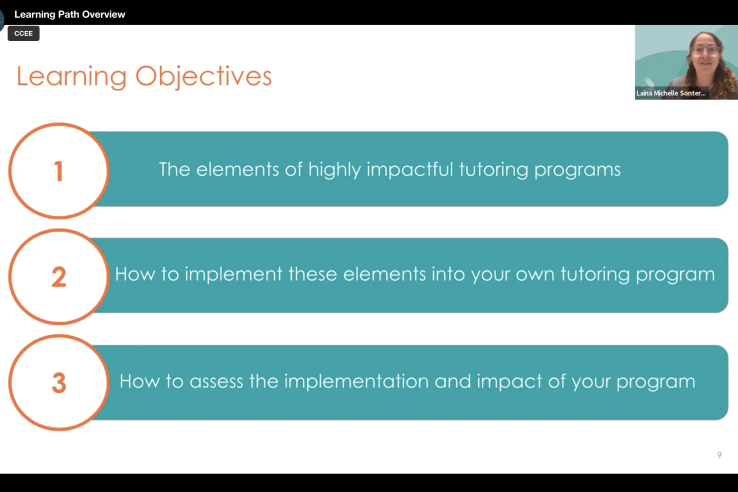
New tutoring resource: A learning path for evidence-based tutoring implementation

A 2020 J-PAL North America meta-analysis of results from 96 randomized evaluations found that tutoring programs can improve academic outcomes up to the equivalent of an additional half-year of school. In the wake of Covid-19, tutoring has dominated discussions on evidence-based methods of accelerating learning. Due in part to J-PAL North America’s evidence synthesis and dissemination efforts, multiple states—including California—passed legislation to implement statewide tutoring programs and increase instructional time for students. Tutoring even received federal attention when the Biden-Harris administration, citing J-PAL North America’s work, called on education agencies to leverage Covid-relief funds to implement and expand tutoring programs.
While the availability of financial and informational resources has expanded rapidly in the past couple of years, implementing high-impact tutoring programs continues to present multiple challenges. For example, school districts must determine how many tutors are needed, how sessions can be incorporated into the school day, and which types of tutors to hire. J-PAL North America is working with public officials across the United States to spread the word on key components of effective tutoring programs, but capacity constraints and other barriers have limited the accessibility of news articles, webinars, and other forms of outreach. To overcome this challenge and provide education agencies and tutoring organizations with easily digestible information in a convenient format, J-PAL North America partnered with the California Collaborative for Educational Excellence (CCEE) to create the Implementing Evidence-Based Tutoring for High Impact learning path in September 2022.
We initially connected with CCEE in 2020 when J-PAL North America, the California Governor’s Office, and the California State Board of Education first met to discuss the tutoring evidence base. Since then, we’ve worked with CCEE and other education agencies in California to disseminate findings from the J-PAL North America tutoring meta-analysis. We participated in several webinars hosted by CCEE, which, while helpful, had limited reach. These webinars also necessitated distilling a great deal of information down to only ten to twenty minutes and forgoing many details.
In collaboration with CCEE, we determined that a series of short yet detailed asynchronous videos could be more helpful than the traditional webinar format. Education agencies and tutoring providers could access these videos on their own time, interact with the content most applicable to their needs, and easily refer back to the resources later.
The resulting learning path includes a combination of short videos, clear resources, and interactive quizzes and graphics. By engaging with the learning path’s seven modules, users will learn about the elements of highly impactful tutoring programs, how to implement these elements, and how to assess the implementation and impact of these programs. Specifically, these modules provide:
- An overview of the learning path;
- A summary of J-PAL North America’s research on tutoring;
- Suggestions for engaging key stakeholders when designing and implementing a tutoring program;
- Resources on tutors and training;
- Insights into evidence-based program delivery models;
- Information on how to collect and use data to conduct a process evaluation; and
- Information on how to conduct an impact evaluation to measure a program’s outcomes.
We designed this resource to help local administrators, education agencies, and tutoring providers maximize the benefits of tutoring programs. By implementing programs with fidelity to the evidence and continuously collecting data to evaluate and improve programs, tutoring can effectively accelerate student learning.
If you have questions about how to apply this evidence to fit your context or feedback on how we can further increase the accessibility of these resources, please contact Kim Dadisman. For more information on J-PAL North America’s tutoring evidence and resources, please visit our tutoring portal.
Related Content


